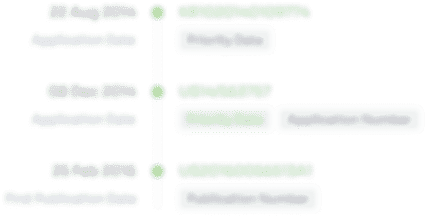Headset antenna and connector for the same
a technology of connectors and antennas, applied in the direction of antennas, antenna details, antenna adaptation in movable bodies, etc., can solve the problems of reducing the reception capability of the current conventional headset antenna, etc., and achieving the effect of reducing coupling, reducing the impedance element, and increasing the equivalent impedan
- Summary
- Abstract
- Description
- Claims
- Application Information
AI Technical Summary
Benefits of technology
Problems solved by technology
Method used
Examples
first embodiment
[0028]FIG. 1 illustrates a headset antenna according to a first embodiment of the present invention. Referring to FIG. 1, the headset antenna 100 includes a connector 110, a headset wire 120 and a speaker 130. The headset wire 120 may include a ground line for left / right sound channels, an audio signal line of a left sound channel, an audio signal line of a right sound channel, an audio signal line of a microphone, and an antenna. According to different types of products, the headset wire 120 may selectively integrates the audio signal lines of the left sound channel and the right sound channel, and the audio signal line of the microphone, or even more signal transmission lines, e.g., a signal line for controlling a volume adjustment. According to an aspect of the first embodiment, the headset wire 120 is exemplified as including a ground line for left / right sound channels, an audio signal line of the left sound channel, an audio signal line of the right sound channel, an audio sign...
second embodiment
[0038]In another concern, the high impedance element can also be disposed on a board of the connector 110 as shown in FIG. 2B. FIG. 2B is a structural diagram illustrating a connector according to a second embodiment of the present invention. Referring to FIG. 2B, there is illustrated a contact portion 200 of the connector. The audio pin P6 is adapted for transmitting an audio signal of the microphone. The audio pin P7 is adapted for transmitting an audio signal of the right sound channel. The audio pin P11 is adapted for transmitting an audio signal of the left sound channel. The antenna pin P10 is adapted for transmitting the RF signal received from the antenna.
[0039]The high impedance elements can be disposed on the rears of respectively the audio pins P6, P7, P11 and directly integrated to the designed position 250 on the board of the connector. In an integrating process, the high impedance elements can be integrated to the substrate by a low temperature co-fired ceramic (LTCC) ...
third embodiment
[0045]FIG. 4 is a schematic structural diagram illustrating an electronic device and a connector thereof according to a third embodiment of the present invention. Referring to FIG. 4, the electronic device 400 includes a connector 450. The connector 450 includes pins 401, 410, 420, 430, 440. The pin 401 for example is a ground pin for grounding left and right sound channels corresponding to ground levels of the audio signals thereof. The pins 410 and 420 are for example audio pins of respectively the left and right sound channels for transmitting audio signals to the headset antenna 460. The pin 430 for example is a microphone audio pin for transmitting audio signals of the microphone. The pin 440 for example is an antenna pin, for transmitting RF signals received by the headset antenna 460. The headset antenna 460 is coupled to the electronic device 400 via the connector 450.
[0046]Each of high impedance elements 402, 412, 422, 432 is disposed at a rear of the pins 401, 410, 420, 43...
PUM
 Login to View More
Login to View More Abstract
Description
Claims
Application Information
 Login to View More
Login to View More - R&D
- Intellectual Property
- Life Sciences
- Materials
- Tech Scout
- Unparalleled Data Quality
- Higher Quality Content
- 60% Fewer Hallucinations
Browse by: Latest US Patents, China's latest patents, Technical Efficacy Thesaurus, Application Domain, Technology Topic, Popular Technical Reports.
© 2025 PatSnap. All rights reserved.Legal|Privacy policy|Modern Slavery Act Transparency Statement|Sitemap|About US| Contact US: help@patsnap.com